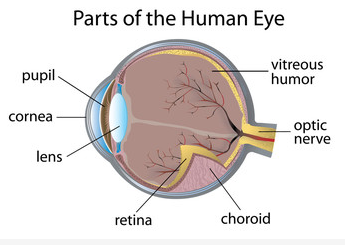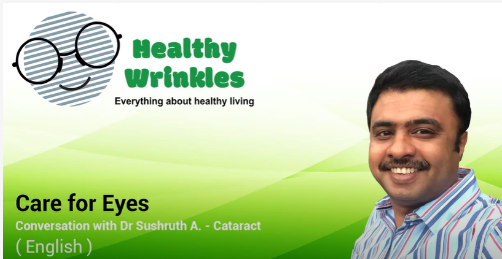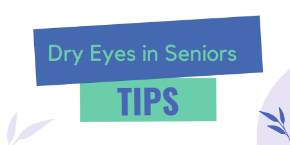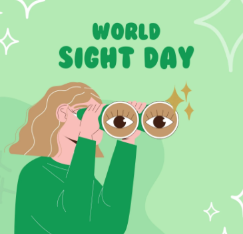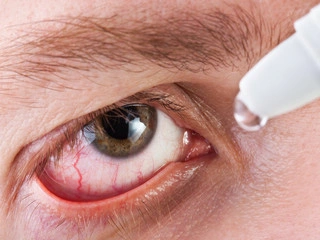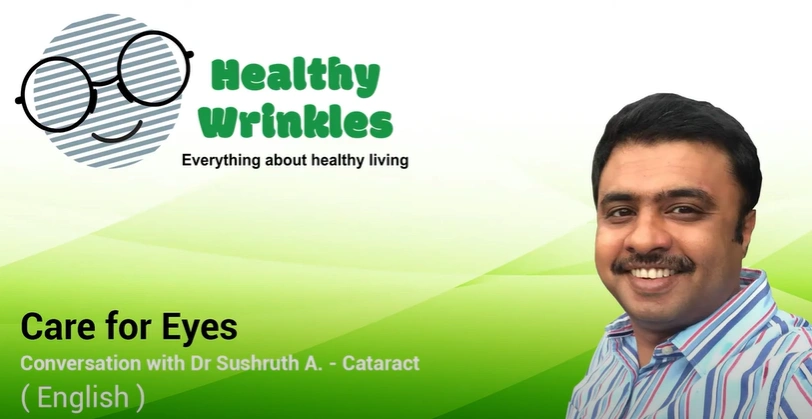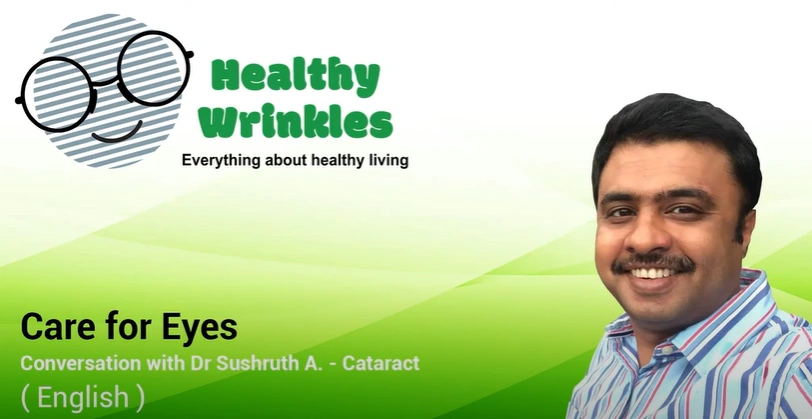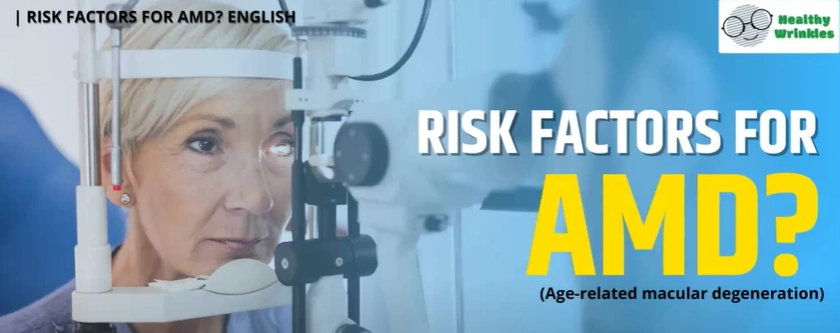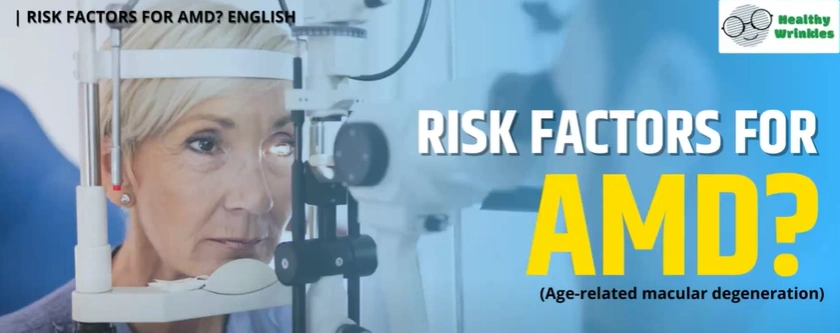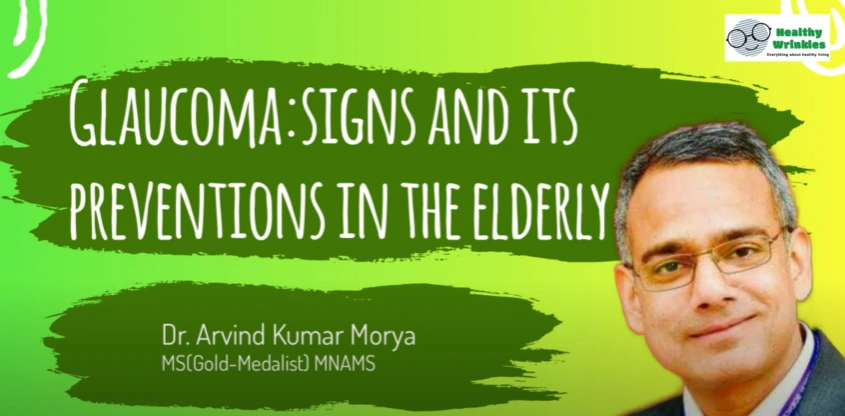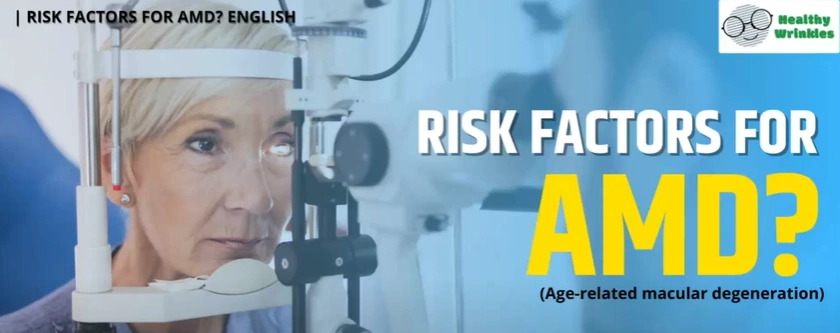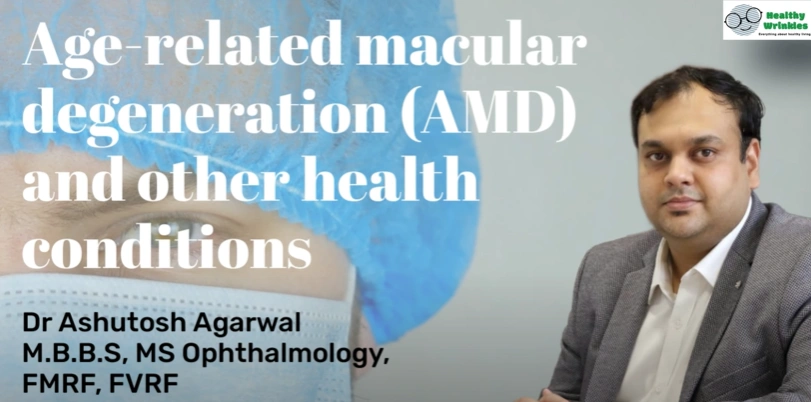Tailored Treatment Approaches for Glaucoma in the Elderly: Insights from Dr. Arvind Kumar Morya
01-10-24
Tailored Treatment Approaches for Glaucoma in the Elderly: Insights from Dr. Arvind Kumar Morya
Dr. Arvind Kumar Morya, Head and Additional Professor at AIIMS, HYDERABAD, in a conversation with Healthy Wrinkles, explains Glaucoma: Treatment in Elderly.
In the second part of Dr. Arvind Kumar Morya's informative series on treating glaucoma, the focus shifts to diverse treatment methods, particularly tailored for the elderly population. As emphasized by Dr. Morya, the line of treatment for glaucoma is highly customized, taking into consideration factors such as the patient's age and the level of intraocular pressure. This article explores the available surgical methods and medications for managing glaucoma in the elderly, shedding light on the complexities and advancements in the field. Watch our curated YouTube playlist to learn more about eye care for the elderly.
Customized Treatment Based on Age and Intraocular Pressure:
Dr. Morya underscores the importance of tailoring glaucoma treatment based on individual patient characteristics. Age plays a crucial role in determining the type of anti-glaucoma medication prescribed. For instance, certain neuroprotective drugs may not be suitable for geriatric patients. The primary modifiable factor in glaucoma treatment is the intraocular pressure, making it a focal point for intervention. While ongoing research explores genetic and stem cell therapies, the current focus remains on managing intraocular pressure. Read more about the role of geriatricians in managing chronic health conditions.
Topical Medications:
A variety of treatment options are available, starting with topical medications. The first line of management comprises prostaglandin analogs, followed by beta blockers, vasoprotective drugs (carbonic anhydrase inhibitors), and neuroprotective drugs like brimonidine. The choice of medication depends on the patient's age and the overall health of the cornea.
Systemic Medications:
In addition to topical medications, systemic treatments in the form of oral medications are considered. Dr. Morya mentions carbonic anhydrase inhibitors like dorzolamide and brinzolamide but highlights the potential side effects of prolonged use. Oral options such as acetazolamide, glycerol, and intravenous mannitol are also discussed, each with its own set of considerations and limitations.
Surgical Interventions:
For cases where medications prove insufficient, various surgical methods come into play. Dr. Morya outlines surgical interventions ranging from goniotomy in congenital glaucoma patients to trabeculectomy, a complex surgery creating an artificial drainage system from the eye's anterior chamber to the subconjunctival space. Implants, including Ahmed valves and collagen implants, may be used to enhance drainage efficiency.
Laser Treatments:
Laser treatments offer additional options for managing glaucoma. Dr. Morya discusses procedures like Nd:YAG laser iridotomy for prophylactic measures when the angle starts to close. Selective laser trabeculoplasty is also mentioned as an alternative for patients with compliance issues related to eye drop usage.
Importance of Timely Surgery:
Dr. Morya emphasizes the criticality of timely surgical intervention, especially in cases where patients may face challenges with prolonged medication usage. Waiting until the optic nerve is extensively damaged is not a viable option. Surgery becomes a necessity, considering factors such as patient compliance, financial constraints, and the overall status of the patient.
Conclusion:
In conclusion, Dr. Arvind Kumar Morya provides invaluable insights into the tailored treatment approaches for glaucoma in the elderly. By considering individual factors such as age, intraocular pressure, and patient compliance, eye care professionals can offer personalized and effective interventions. This comprehensive overview of surgical methods and medications serves as a guide for both healthcare providers and patients navigating the complexities of glaucoma management in the elderly. Timely and customized treatments are key to preserving vision and enhancing the quality of life for individuals dealing with this sight-threatening condition. Learn more about the common eye problems in elderly population.
Whether you are searching for informative articles, or looking for healthcare providers, Healthy Wrinkles is an excellent resource for all your senior care needs. We also have a great compilation of all the medical expert talks for healthy aging on Healthy Wrinkle YouTube channel.
"Join the cause and make a difference in a senior's life - share your knowledge about local senior care resources today!"
Disclaimer: Healthy Wrinkles does not recommend or offer any medical diagnosis, treatment, or advice. The information provided here is only for the awareness of disease or ailment among individuals, caregivers, and the public. The advice of doctors, licensed professionals, or therapists who are knowledgeable about your particular situation should always be sought before using the information provided here. It should also not be used in the event of a medical emergency or for the diagnosis or treatment of any medical condition. If you want urgent assistance, contact a qualified medical professional. Additionally, the information represents the author's views and not those of Healthy Wrinkles.
#glaucoma #eyecare #prevention #healthyaging #healthywrinkles #elederlycare #opthomology

